Physical Address
304 North Cardinal St.
Dorchester Center, MA 02124
A number of complications may be associated with laparoscopic surgery. Several of these iatrogenic injuries are unique and peculiar to the laparoscopic procedure itself (i.e., separate from the major surgical objective). For example, total abdominal hysterectomy is associated with the risk of a number of complications inherent to the surgical procedure, whereas laparoscopic hysterectomy has risks associated with the laparoscopic approach plus the hysterectomy portion of the operation.
The two most serious laparoscopic complications are major vascular injury and intestinal damage. The former results in massive intra-abdominal hemorrhage and hypovolemic shock. This catastrophe must be managed in a timely, appropriate manner; otherwise, the patient will die as exemplified in case one autopsy photographs ( Fig. 119.1A to C ). A second case showing autopsy photographs illustrates the cataclysmic outcome of retroperitoneal great vessel injury. In this case delayed surgical intervention led to this young woman’s demise ( Fig. 119.1D to H ). Small or large intestinal injury inevitably leads to immediate or delayed perforation ( Fig. 119.2A and B ). Fig. 119.2C details a compound injury created by injudicious supraumbilical trocar placement. In the case illustrated the trocar creates a through-and-through perforation of the transverse colon, which is coupled with even worse collateral damage inflicted to the superior mesenteric artery. The failure to promptly identify and treat the laceration of a great retroperitoneal vessel injury led to the patient’s death by exsanguination. In some instances, significant damage to the bowel mesentery or directly to the blood vascular supply will result in ischemia followed by intestinal necrosis ( Fig. 119.3A to D ). As bowel contents spill into the abdominal cavity and then into the bloodstream, infection and sepsis follow. Sepsis syndrome is manifested by systemic inflammatory response syndrome (SIRS) ( Tables 119.1 and 119.2 ). A cascade of events triggered by bacteremia and bacterial endotoxins and exotoxins eventuates in multiple organ failure. Necrotizing fasciitis may further complicate the picture in these cases. The condition progresses rapidly and is hallmarked by inordinate wound pain with cellulitis-like signs. Radiologic studies may show air within the abdominal wall ( Fig. 119.3E and F ). The bottom run of the downward spiral of events is septic shock (hypotension) and death. It is most convenient to subdivide these complications into those associated with the laparoscopic approach and those associated with the operative procedure ( Table 119.3 ). Electrosurgical technology has become the principal methodology for hemostasis during laparoscopic operations. These techniques use either monopolar or bipolar circuits. The latter clearly offer greater safety compared with the former (see Chapter 6 ’s discussion of energy devices). Both types of circuitry, however, can create damage to surrounding intra-abdominal structures by thermal conduction through tissues beyond the target point of electrode contact. Fig. 119.4A to E illustrates the progression of an intestinal burn from initial impact to full perforation. Figs. 119.5A and B and 119.6A and B illustrate a thermal injury to the colon, which subsequently results in a colonic-vaginal fistula.
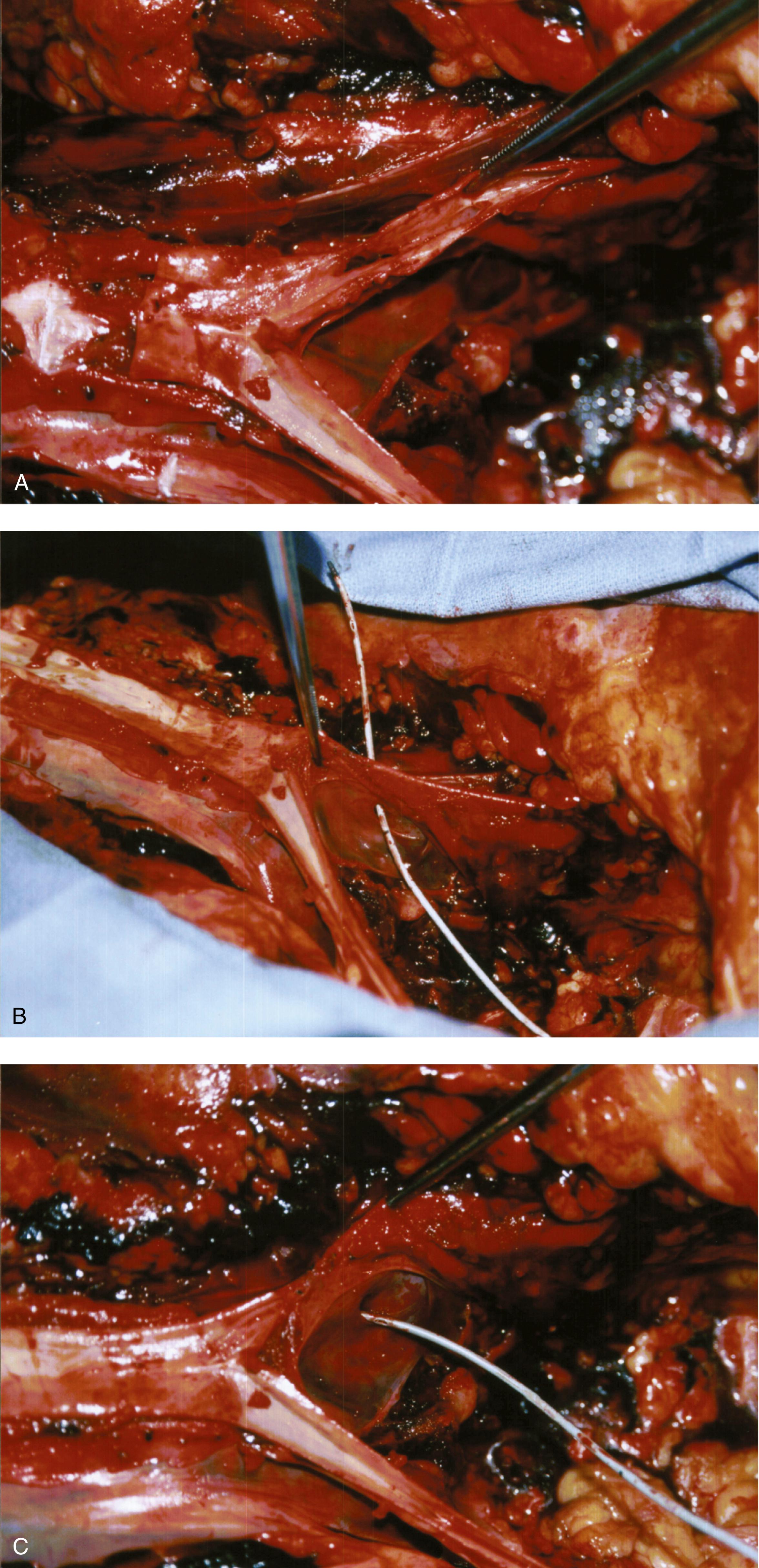
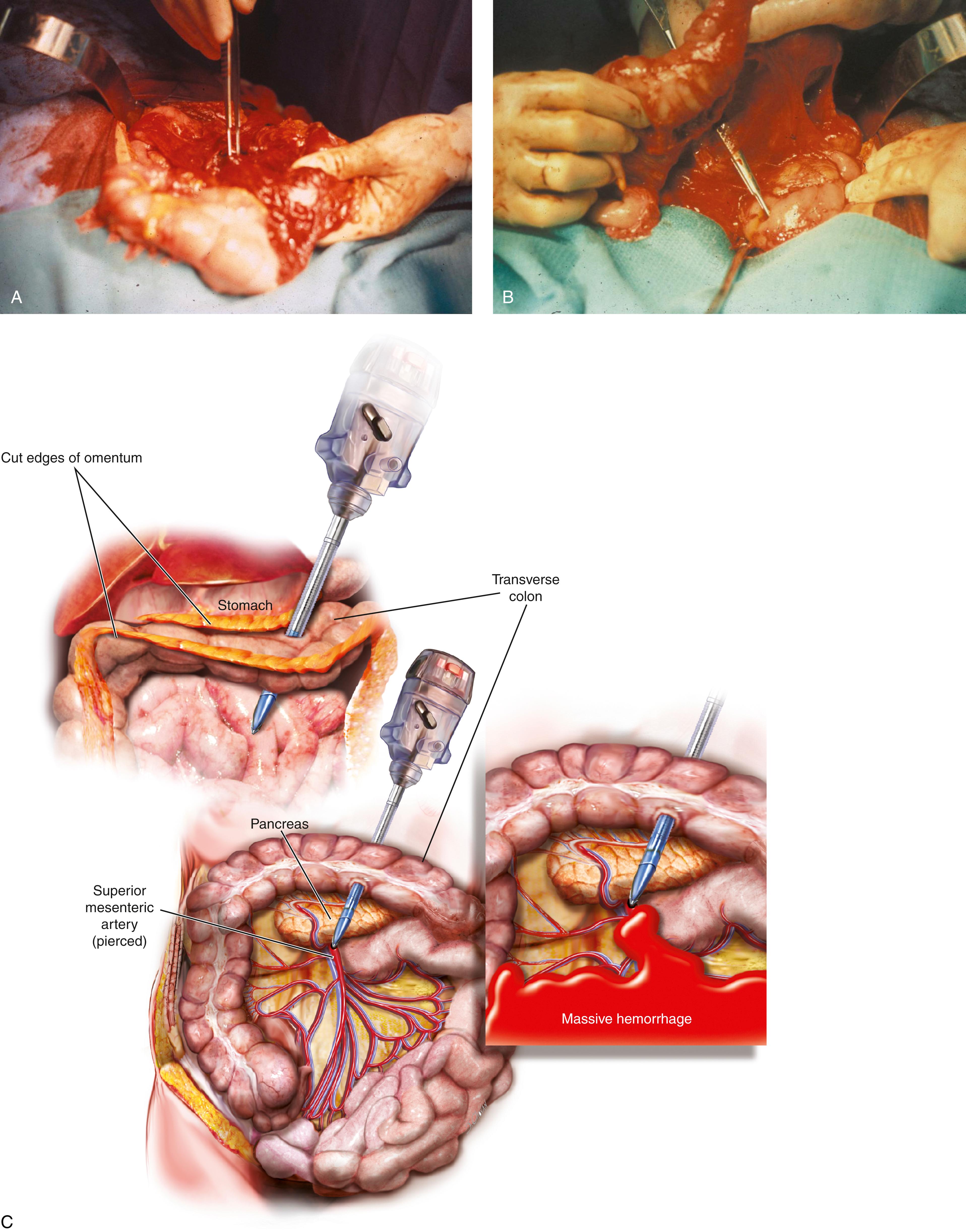
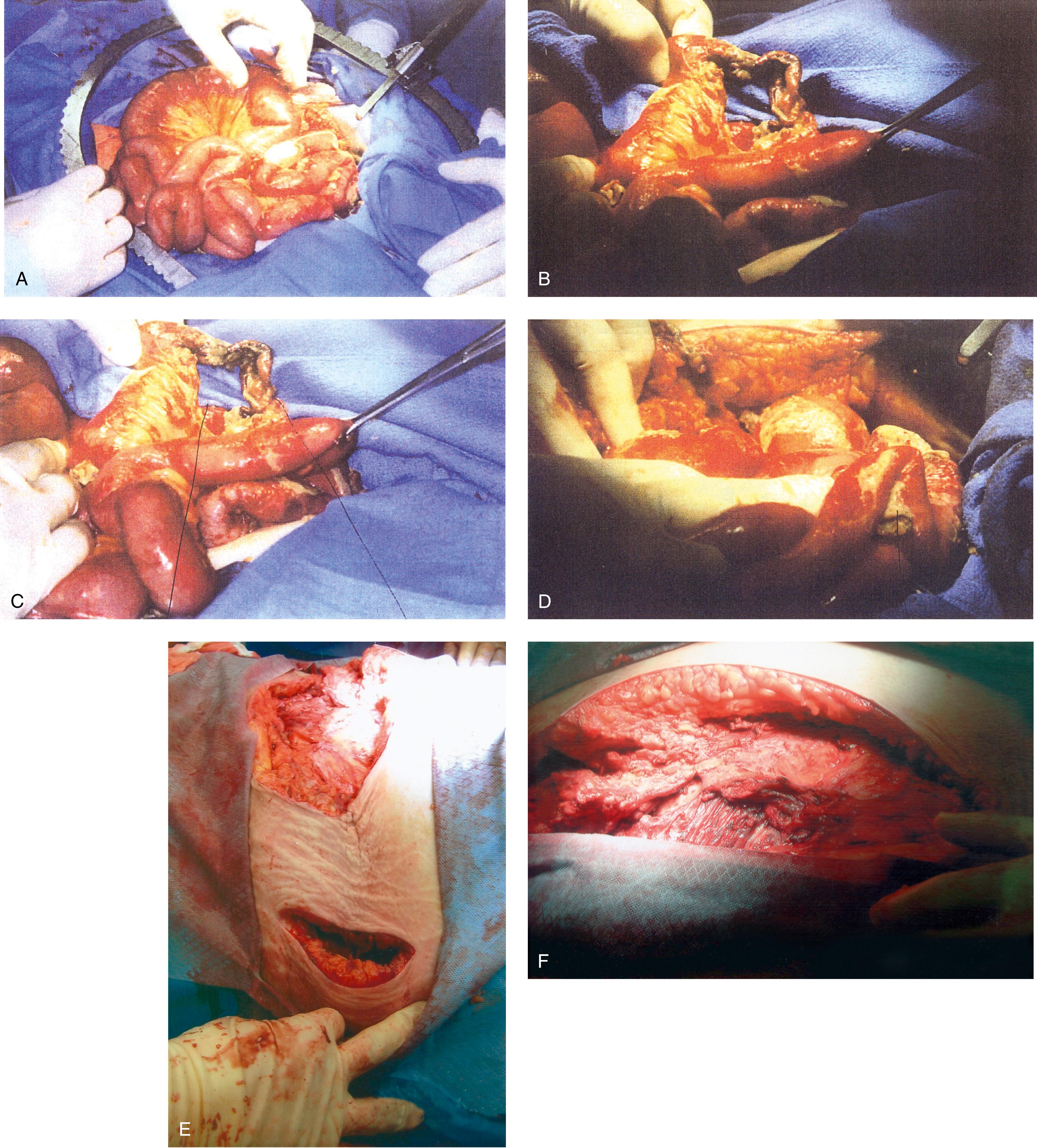
|
| The principal derangements that arise as a result of bowel perforation include infection and fluid-electrolyte imbalance and their sequelae. Intestinal fluid and feces contain a variety of bacteria, such as Escherichia coli, Enterococcus, Klebsiella, Proteus, Pseudomonas, and Clostridium, to name a few. These bacteria produce toxins that facilitate entry of bacteria into the circulation and contribute to a downward spiral of events, referred to as sepsis syndrome, as well as intra-abdominal abscess: |
|
| A number of progressive complications are predictable but may occur at variable intervals after the initial perforation. The most frequent complications associated with colonic injury include the following: |
|
| The most common sequelae after small-bowel perforation are as follows: |
|
| Approach | Percentage | Small Intestine | Percentage | Colon |
|---|---|---|---|---|
| Entry related | 77% | 62 | 41% | 20 |
| Primary trocar | (57) | (18) | ||
| Secondary trocar | (3) | (1) | ||
| Other | (2) | (1) | ||
| Operative related | 23% | 19 | 59% | 29 |
| With energy | (10) | (11) | ||
| Without energy | (9) | (18) | ||
| Total | 100% | 81 | 100% | 49 |
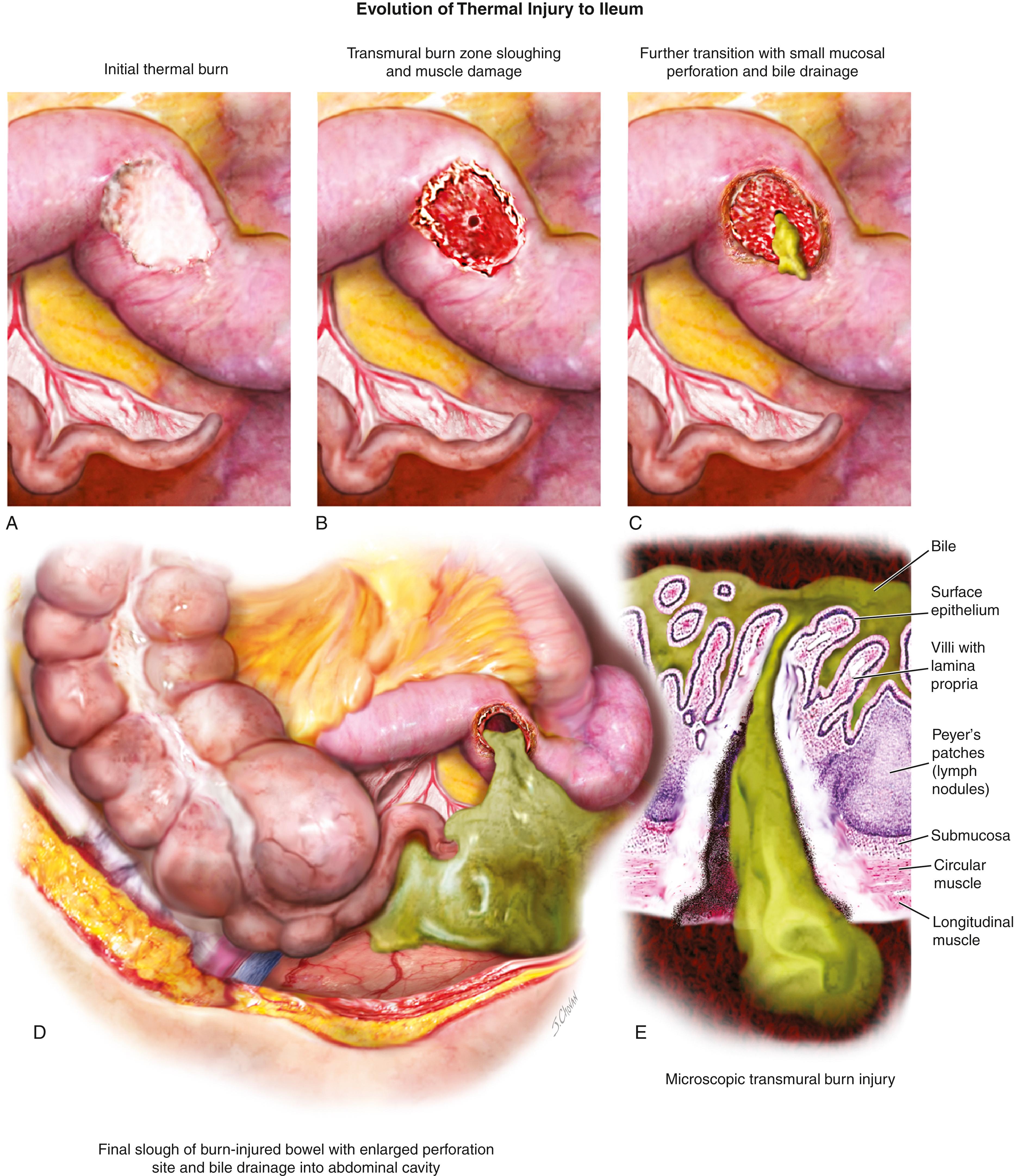
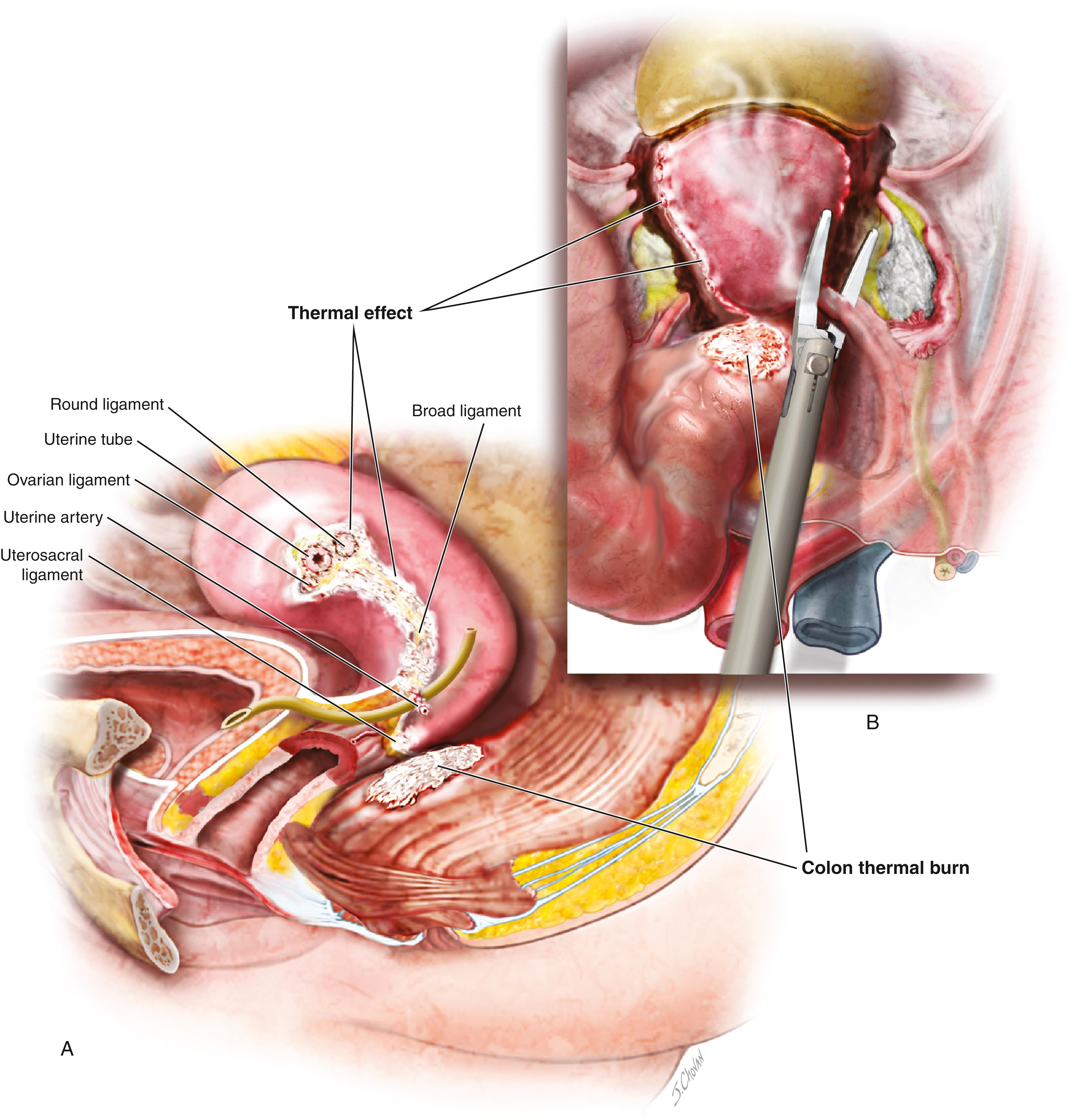
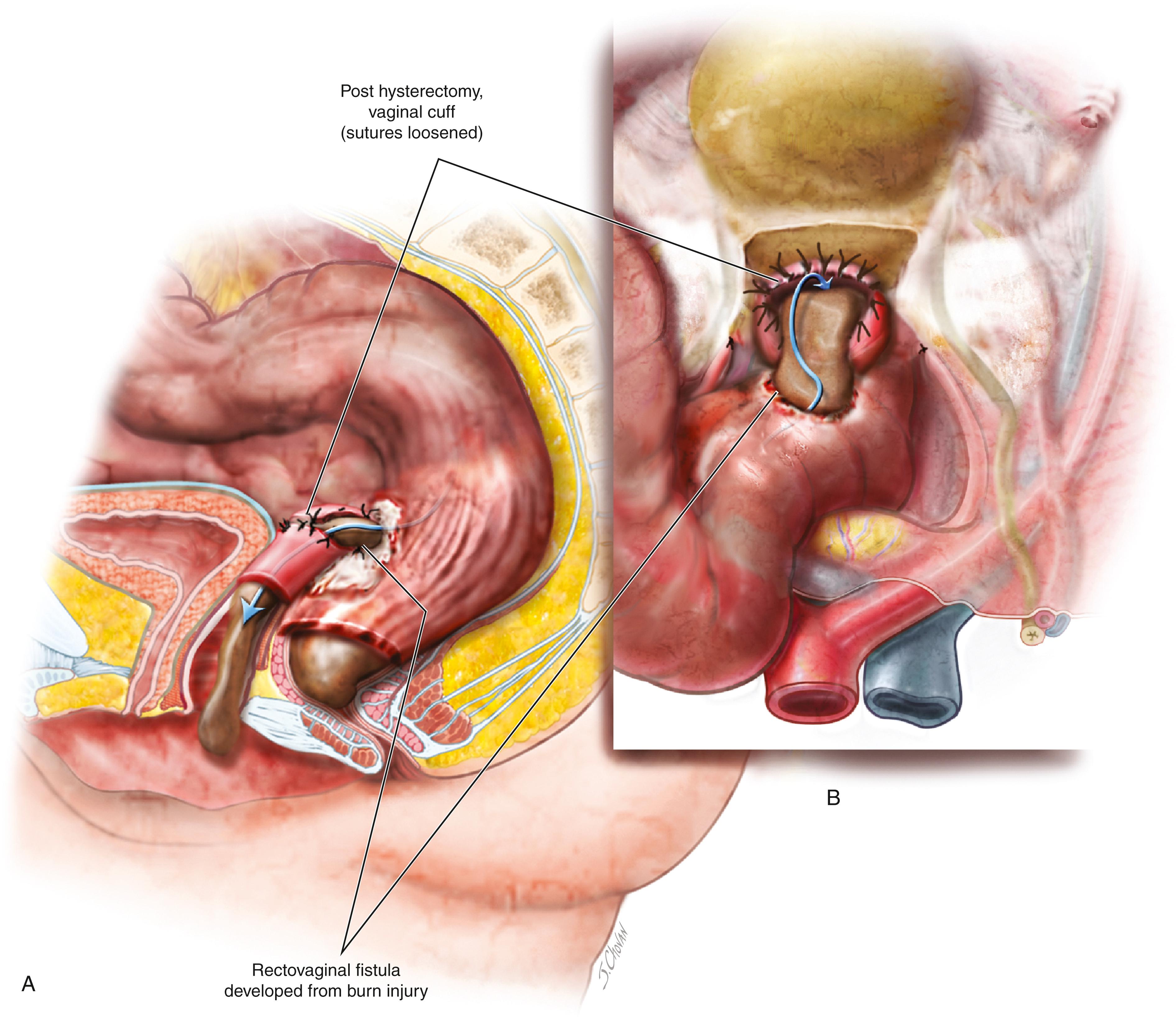
Become a Clinical Tree membership for Full access and enjoy Unlimited articles
If you are a member. Log in here